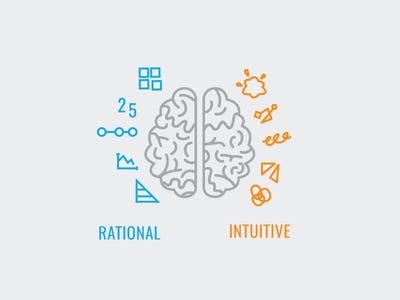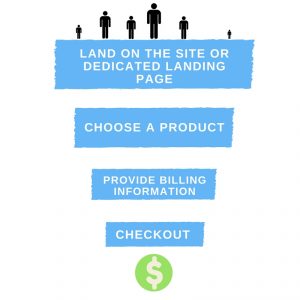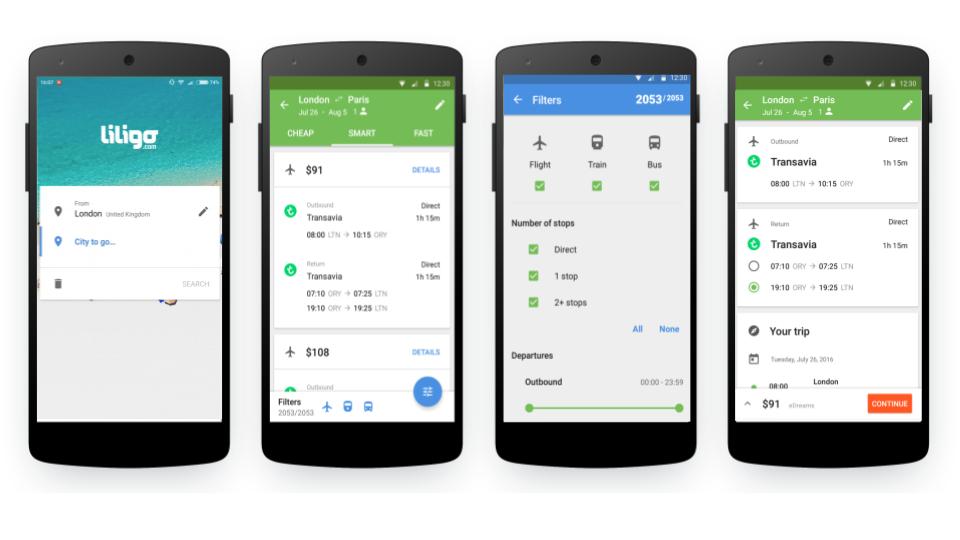When people hear the word “data” , often the following things come to mind:
- the more is the better
- objective judgement
- numbers
- not innovative
When taking the stereotypes mentioned above into web/app development, you can often hear
“It seems that we got the same conversion rate even after the new design.. according to the data.”
Then comes the worst case scenario “A”: Throw the new design into the trash and complain about how worthless and a waste of time this effort was.
The problem with this logic is that you act out of emotions. You’re upset because your fantastic design did not produce the expected results so you draw the hasty conclusion that it’s simply ineffective. Before you make such big decision, however, it’s necessary to carry out plenty of tests; therefore, throwing your new design away just because you did not experience any radical change in the first few weeks would be a pretty foolish step.
The smart case scenario “B”: Ok we have the data, now let’s hire an expert and figure it out what’s going on.
With the help of the data you’ve collected, you can
- Prove — that you’re on track or not
- Reveal— future opportunities or pain-points, discover new patterns and trends
- Discover — new patterns and trends
- Improve — your design by adding objectivity
Keep in mind that the world is not just black-and-white where only ROI matters.
It’s not about pointing fingers but thinking one step ahead.
So what do you get if you “stay awhile and listen”?
The aim of this article is to give an overall view of data-driven design and reveal common misconceptions. You will understand
- why data is essential for the design
- how you can collect data
- what is the right way is to use the data you’ve collected
Common misconceptions:
– I know my users
It’s a must when it comes to finding out what the target audience prefers; it’s not an easy task and designers often overdo this part. The problems start with them willing to fulfill every single need and consider all the possible variables.
“BUT designers aren’t users!”
What does this mean? It means that even the best designers in the world can’t predict what users want. Unless they have a giant crystal ball it’s nearly impossible to nail everything. If you take 100 variables into consideration, Mother Nature will grant you plus one. This is a good thing because the world would be boring if you could just make decisions based on pure data.
– Data is for the managers

Some people tend to assume that a designer makes user testing useless; it’s thought that s/he is a sorcerer who sits in front of a PC and a couple of months later rainbow bursts out of the screen and the servers crash due to the incoming traffic. In other words, the general belief is that the designer will eventually come up with something super that the users will surely like.
Obviously…not.
Data is essential for a successful design and you should be aware of this, regardless of being a designer or just someone who wants to hire one. As I mentioned previously, you are not the user. However, by studying your target group, you can get as close to them as Icarus was to the Sun. (without burning yourself, of course). To succeed, you have to investigate how they interact with the service or product. Figure out what they like or dislike, etc.; this helps your design team to get to know and understand the users.
“A lot of times, people don’t know what they want until you show it to them.” — Steve Jobs
You might be thinking, ok that’s Apple, but this works quite well when you’re about to show something new to the world, like the Fidget Spinner. In case you wish to improve an existing design, brand etc. just test it and be patient. Sometimes moving forward a bit slower can take you further. If you have a big project or a complete overhaul on a website, try to segment it into smaller portions.
Set up milestones and experiment with smaller changes rather than throwing it all to the target group and expect that they’ll love it.
– Just stick to the best practices
“There is no need to reinvent the wheel.”
This is partially right; however, if everyone thought this way, there would be no need for new designs and eventually everything would look linear. Sounds boring. How can Data-driven design offer more than best practices?
The implementation of a data-driven design can help. Conduct A/B tests, surveys, consumer research. Site analytics is another way to gather valuable data that get you through the design process. With quality insights into your visitors’ behaviour, you’ll be more than just another drop in the mainstream. Users value this better.
– Innovation and data: the odd combo

Or is it?
The data-driven thinking is often considered a conservative way which is against innovation. Statistics and users never suggest anything innovative; as Henry Ford, the famous American industrialist said once: “If I had asked people what they wanted, they would have said faster horses”. However, the world has changed and also the world of UX. Now we live in a world where information goes back and forth and it’s not just a linear process anymore. Take a look at Japan, for an example; important business decisions related to manufacturing and design are often born on lower levels of the corporate hierarchy.
So how can you get started?
Collecting data can be quite overwhelming. Especially if you don’t know where to start. If you have set milestones and segmented your project, the next step is to prioritize. Check which points are the most important in the design phase. Ask questions such as:
- Is the development environment agile or waterfall type?
- What are the deadlines?
- What’s your budget?
- How much data is there to process at a time?
Analyze the customers you currently have; there are tons of tools out there to gather valuable data. Look for certain patterns in the user flow; if you find any behavior that can lead to conversion drops, try to reproduce the symptoms. Just imagine this process as a car that needs reparation. When you take it to the mechanic, the first things he’ll want to know about are the symptoms. The next thing will be the test drive to gather more information (just like you would collect data), then he’ll try to reproduce the problems. Start looking for “leaks” in your conversion funnel. In marketing, the funnel describes the user journey through an application or a website/webshop. 
The funnel shape – like shown on the image above – comes from the fact that on every stage the company loses a certain amount of users as they proceed through. The marketer’s duty to bring more visitors to the top of the funnel. However, when it comes to increasing the efficiency of the different levels, marketers and designers have to work together. After you’ve collected the necessary amount of information and have a rough idea what’s going on in the user’s mind, you can proceed to fine-tune the structure of your design.
Predictive personas
If you just dive into the world of User Experience design, I’m sure one of the first things that you’ll learn is the word “Persona”. In one of my previous articles, I described it as:
“Personas are fictional characters who describe the real characteristics of your targeted individuals. Your goal here is to understand their motives and fears as much as you can. Once you’ve created a persona, try to draw a background. You don’t have to overthink this part and grab your crayons. Just imagine what you would do if you were that person with that background, who is about to fill a form on a website.”

You can use them during the wireframing or prototyping. This is a great way to get started with your data gathering process since it will narrow the field of your view down. Also, it is a great idea to use them as you have the first final version of the new design.
“Your persona should reflect people you can find in the wild.”
But what makes them predictive?
Imagine the predictive persona as a tool which allows you to identify factors such as whether the member of the target group will be your customer or not. This helps a lot when you’re creating a new website design for your current group of users or trying to convince a new group of people to use your product. Needless to say, this process is extremely data-driven. Once you have enough data gathered and selected to create a predictive persona, you can say you have an accurate overview of your users’ needs. This will help you get through the design process and as a result, you will have a great user experience and satisfied customers.
Case Study
To wrap things up, allow me to demonstrate the power of data in the world of design with Liligo travel app example. The app was redesigned by UX agency through continuous research and testing. The basic method they chose as follows:
- Research and Exploration – this involved building different user journeys for Liligo personas
- Sketching and Prototyping – coming up with as many different ideas as possible
- Designing Solutions and Testing them – user interviews, AB testing, heatmaps, user and guerilla testing were used in order to sort out best designs
- Features and Detailed Design – summarizing testing results and develop the optimal design for better user experience
New features such as easy search flow, sorted results, grouping results, filtering options, journey details were the results of the redesigning process.

Conclusion:
There are common misconceptions that consider UX as pure art. But there is a lot more involved. Understanding how to collect and process data is one of the key tasks you have to face as a UX designer. Just think about this when experimenting with Predictive personas. So should you slash your research budget and put everything towards hiring a world-class designer? Absolutely not.
What are your thoughts on the topic? Are you passionate about what can be done with the help of data? Please share your ideas in the comment section below!
Don't forget, sharing is caring! :)


8 Comments
Mark Larson
2020-04-15 at 21:03Hi there, I hope you’re doing well, I think user experience (UX) should be felt by the user when he connects, for example, to a site, program, application or gadget.
This is the time when the client is involved, so progressive organizations focus on learning more about the needs and interests of their audience in order to offer the best solution and meet these needs.
User experience is associated with creating constructive contact with people so that they remain loyal to the brand. This strategy has long been used for research and examination.
Alpharaptors
2022-03-08 at 12:17Good Post. Thanks to shared your useful Article like this.
Marathonyall
2022-03-10 at 16:01Good Post. Thanks to shared your Amazing Articles.
Lxhotel
2022-03-13 at 06:57Nice Post. Thanks to shared your Wonderful Information.
glitzlife care
2023-05-11 at 11:48This concept is a good way to enhance knowledge and will be recommended this information to my friends. Thanks for explaining it perfectly continue to share your knowledge through articles like these, and keep posting more blogs.
Lxhotel
2023-08-22 at 13:44This a such a useful article. l learned new information day.
humayoun mussawar
2024-01-28 at 14:11Data-driven UX revolves around the needs and preferences of users. It seeks to understand user behavior and preferences through data analysis.